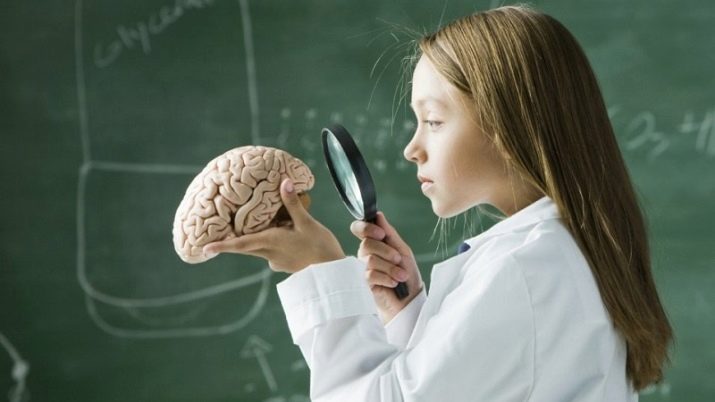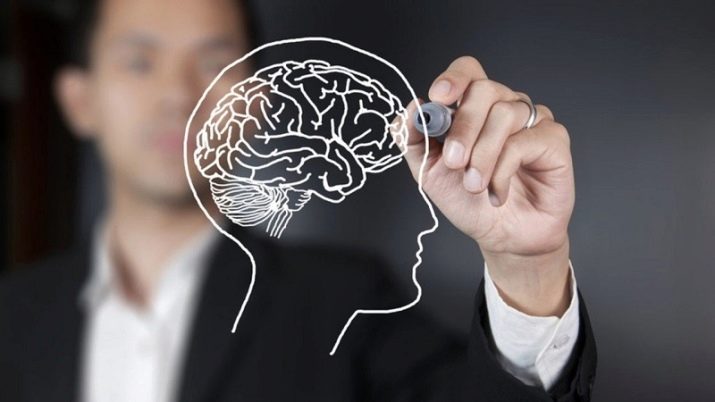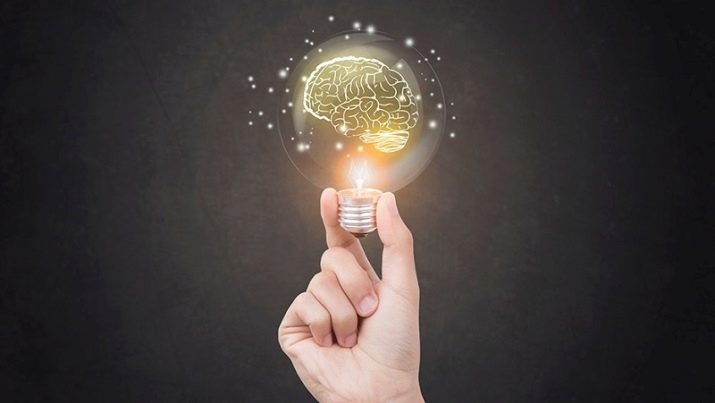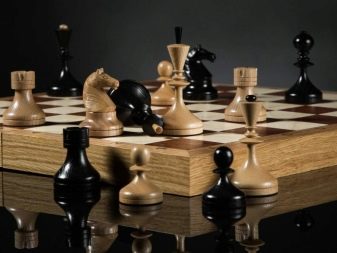Memory: properties, functions and types

The human brain is capable of storing information about the external world, which helps the subject to adapt to rapidly changing living conditions. Thanks to the presence of memory, a person shapes his future.
What it is?
Human memory is designed in such a way that traces of various facts and information are stored in it with the subsequent possibility of their restoration. The earthly path of an individual runs from an experienced past into an unknown future. The present is a continuation of the past and a point of intersection with future events. Memory serves as a link between them. It helps the individual to keep information in his head and to reproduce the acquired experience in the future.
The general idea of memory boils down to the fact that it is the main mental function and a special type of mental activity. Thanks to her, a person can recognize and reproduce traces of accumulated experience. The concept of memory is closely related to the individual psychological and age characteristics of the individual. Each person notices some ups and downs of his own intellectual level. Young people have a much better memory than older citizens.
Memorization is closely related to language. The child begins to remember himself precisely from the moment he acquires the ability to describe events in phrases that contribute to memorization.

What happens?
Memory is a multifaceted concept. For example, there is mirror memory. There is an opinion among the people that the mirror has the property of memorizing the objects reflected in it.For this reason, the mirror is considered the source of mysterious and mystical phenomena. It is no coincidence that they hang it when a loved one dies. Many superstitions and rituals are associated with the fear of the accumulation of information by the mirror surface.
Modern people are interested in the amount of memory of their own gadgets, tablet and stationary computers, various flash cards. Electronics can store large amounts of data. Scientists have calculated that the size of human memory is approximately a quadrillion bytes.
A special function is performed by cognitive memory... Its repository has its own internal library of all knowledge acquired by a person. Individuals with absolute memory, accurately reproduce what was once seen or heard. They remember without much difficulty voluminous texts, various tables, rows with a large number of numbers or words. Such people can thoroughly describe the events of any day in their lives.
Memory classification is based on:
- memory mechanism;
- shelf life of the received material;
- physiological possibilities of accumulating various information;
- evaluating memory-related analyzers;
- type of information acquisition: what emotions, movements or abstract reflections were involved at this moment.
Psychologists and physiologists, by the way of memorizing, distinguish voluntary and involuntary memory. By the content and nature of the manifestation - figurative, verbal, verbal-logical, emotional, motor, mechanical memory. By the time of memorization - short-term, long-term, intermediate, operational and sensory (instant) memory.

The memorization process begins with the perception of information by the senses. At the initial stage of the receipt of information, receptors are involved. Works instantly sensory memory. It retains the data even after the impact on the analyzers is completed. Instant memory is capable of accepting a huge amount of small details. After the disappearance of the initial fingerprint, the information loses its availability, but can be replaced by new information.
Experts identify the following types of memorization at the sensory level.
- Iconic memory saves the data presented by the print from the organs of vision. It helps to capture visual information in a holistic manner.
- Echoic memory processes material perceived by the ear in the form of sound waves. Thanks to the sensory copy, alternating auditory information is integrated into a single image.
- Tactile memory captures information obtained through the peripheral receptors of the skin. It plays an important role in the realization of motor function. Sensitive receptors are located throughout the body, which send a signal to the brain about itching, pain, pressure on the skin.
- Olfactory memory allows you to accurately determine the aroma of a substance or product. With its help, an individual distinguishes about 10 thousand different smells.
After processing at the sensory level, the material passes into the next subsystem - short-term memory. In the future, part of the processed and encoded material is moved to long-term storage.


Properties
The human brain remembers the necessary information, stores it in its archive, and, if necessary, extracts it from there. The quality of memory depends on the person's age, the regularity of mental activity, genetic characteristics of the personality and pathological changes that have occurred as a result of physical or mental trauma.
In terms of its functional significance, memory has the following properties:
- accuracy is determined by the correspondence of the received and reproduced information;
- volume characterized by the amount of recorded information;
- memorization speed determined by the efficiency of data processing and recording;
- playback speed indicates the ability of brain structures to restore once stored information;
- forgetting speed affects the process of losing the received material.
These properties make it possible to assess the degree of memory development and the existing brain disorders. With poor memorization, there is a high rate of forgetting, reduced processing and data fixation.
The presence of a good memory is evidenced by high indicators of accuracy, volume and speed of memorization.

Functions
Memory plays an important role in a person's life, because it enables a person to use the data of his experience. It is no coincidence that physical theory is based on the creation and activation of neural models that allow the brain to perform its main functions: remember, store, reproduce and forget information from its own experience.
- Memorization. In the process of memorizing, traces of the introduced new information are imprinted in the brain structures. At this time, there is a perception of data, their experience, mental construction of associative rows, the establishment of semantic connections. The memorized material is reduced to a single whole.
- Preservation. The accumulation of information in the archive of the brain includes the processing and assimilation of all material. The saved experience allows a person to study in the future, improve the perception of the world, internal assessments, thinking and speech.
- Playback. In the process of involuntary extraction of the necessary material from the depths of the brain, the image emerges in the consciousness of the individual without the application of certain efforts to this. Random playback is often difficult. Sometimes it takes time to remember. Facts and events in the process of restoration can be transformed and rebuilt. The reproduced data does not constitute an exact copy of what was once sent to the storage of the brain.
- Forgetting. The loss of the ability to reproduce previously received material may occur due to its insignificance. Partial forgetting is characterized by incomplete or erroneous recovery of information. With complete forgetting, the individual is unable to recognize and reproduce it.
Sometimes the inability to remember a particular event is associated with a traumatic brain injury, degenerative processes in the nervous system, or the onset of old age.

Memory theories
The structure of memory, mechanisms of memorization attract the attention of many researchers. Scientists from around the world are creating various theories on the basic qualities and types of memory. Researchers take into account that some people easily assimilate a large amount of information and fix it for a long time in the structure of their brain, while others slowly memorize and quickly forget the material.
There is a theory that between the ages of 15 and 25, an individual undergoes hormonal changes and a brain is formed. The formation of new neural connections leads a person to self-awareness. By this time, numerous information has been accumulating, which are subsequently transformed into memories. For this reason, puberty is well remembered for the rest of your life.
In psychology, some important laws are highlighted.
- For productive use of memory resources it is necessary to prepare for the perception of the material, study the settings and settings. You need to carefully review all the information to be mastered.
- The law of vivid impressions helps to consolidate incoming material. Bright events are remembered without much difficulty. Anyone can easily and quickly recall an interesting episode that happened many years ago. An extravagant personality also remains in the memory for a long time. To accumulate the necessary information, you should give it brightness and originality.
- The Law of the Significance of Content assumes the distribution of all facts and information as needed. Everything that is connected with personal affections, hobbies, life values, own emotions does not cause any problems when fixing the necessary moments in memory.
- The law of motivation is realized due to the motivating force. The desire to reach certain heights, to receive a prize in a competition or in a competition endows a person with strong motivation to memorize a large amount of various information. It is no coincidence that school subjects are difficult to master, which, in the opinion of students, will not be useful to them in life.
- Activity law implies the performance of some action before the accumulation of the necessary information. Any calculations, comparisons, isolation of the main ideas improve the learning process, so you need to deliberately get involved in the work on the necessary information, do some kind of action with it.
- The reliance on previously acquired experience is laid in the law of prior knowledge. New concepts are easy to learn based on familiar material. To do this, it is necessary to analyze and systematize the information, draw appropriate parallels.
- The law of mutual influence of traces of memory is based on the organization of memorization through the alternation of mental activity and the use of small pauses, during which the necessary information is fixed in the head.
There is no single theory of memory. For example, the semantic theory of memory is based on the fact that the memorization process is directly dependent on the presence or lack of semantic links that contribute to the semantic perception of the information being studied. Some semantic connections included in the context help to consolidate and reproduce the necessary material.
Representatives of different sciences address the problems of memory. Psychologists and physiologists have managed to penetrate the very depths of the human brain. Their theories greatly expand knowledge of human memory.


Psychological
In psychology, there are various theoretical directions: associative, gestalt psychological, behavioristic and active theories of memory.
- In one of the earliest theories, association is central to memorization. When a new concept enters the human brain, already familiar images emerge, and an associative connection is established between them. With the repeated perception of this element, a representation of all the details arises in the mind.
- Gestalt theory implies the performance of certain tasks by the subjects. Working on them, the person is interested in bringing them to their logical conclusion. The tasks are designed for data restructuring. A person has to separate or unite them through rhythmization or symmetrization. Well-organized, structured material is easy to remember.
- Behavioral theory is aimed at consolidating the studied material. In theory, much attention is paid to the study of the work of memory during learning. It is believed that reinforcement exercises have a positive and negative impact on further learning. When drawing up tasks, the amount of information, the measure of similarity, the degree of learning, the age and individual characteristics of students are taken into account.
- The theory is very popular, in which the activity of the individual is considered as a factor that forms, in addition to other mental processes, and memory.
The effectiveness of memorization depends on the importance of information in the activities of the individual.

Physiological
Such theories are inextricably linked with the teachings of I.P. Pavlov. They are based on the characteristics of higher nervous activity. According to such theoretical studies, the act itself constitutes a conditioned reflex as a process of the emergence of a connection between the acquired and already acquired material. The concept of anchoring in this case is due to this process. The person achieves an immediate goal through reinforcing actions.
Significance for human life
Forgetting the previous experience, the personality would not be able to improve. Memory is important for ensuring the full functioning of the subject and its development. It is a kind of tool with which an individual accumulates the necessary information and uses it in his later life. Thanks to memorization, human consciousness is not limited to sensations and perceptions. It is filled with acquired knowledge. Without memory, human thinking would be limited to the material obtained as a result of direct perception.

How can you improve?
The brain is flexible, therefore, amenable to improvement. The effectiveness of memorization directly depends on the ability to concentrate. Individuals sometimes concentrate well enough while perceiving new information. Solve crosswords and puzzles, solve problems, play chess, study foreign languages, read fiction, memorize poems and songs, repeat the material learned, recall the events of the past day.
Walking in the fresh air, good nutrition, good sleep, lack of stress and negative emotions, exercise, and an active lifestyle contribute to improving memory. The text is well remembered, supported by a certain musical rhythm or a funny melody. Apply imaginative thinking. Images linger in the head much longer than words.
It is advisable to mentally imagine objects in an exaggerated and even caricatured form. Effective preservation of information occurs with increased concentration of attention and the creation of associative rows. The incoming information must be encoded. Personal association chains should be associated with vivid images and emotions.
Create visual routes and attach the information necessary for memorization to objects. It is best to attach concepts to objects you encounter on your way home or in your own room. If you need to restore certain words in your mind, you should come up with a story in which all of them will be involved.
Memory can be developed through a variety of exercises.
- Look at a picture of animals for one minute. Then write them down in alphabetical order without peeping.
- Look at any picture for 2 seconds, then close your eyes and mentally imagine the image, try to reproduce it in your head. Open your eyes and look at the drawing again, evaluate your memorization capabilities.
- Scatter several matches in a chaotic manner. Record their location in memory. At the other end of the table, without peeping, arrange the same number of matches in the same order.


Interesting Facts
The human brain differs from the computer in its energy dependence. According to scientists, after the death of the brain, all information accumulated throughout life is lost within 6 minutes. Computer storage of data may not be dependent on the availability of energy.
It is very difficult to accurately measure the amount of long-term human memory. According to scientists, it can reach a quadrillion bytes. Short-term memory is calculated by the number of objects held by a person in the head. Computer memory is measured in gigabytes and terabytes.
The file system allows you to know exactly the amount and content of the stored information. No person can reliably know what is stored in his memory. Computer technology reproduces information accurately. The human brain is incapable of keeping it ready-made. The next reproduction of the same material may have differences in details.
If a person cannot remember something in any way, he must pick up a pencil and start drawing. A schematic representation helps to extract the necessary information from the depths of the brain structures. For example, you can't remember how many paintings are hanging on the wall in your living room. Drawing stimulates creative thinking.
The problem is solved by the fact that the schematic drawing draws your attention to some accidentally overlooked features.










